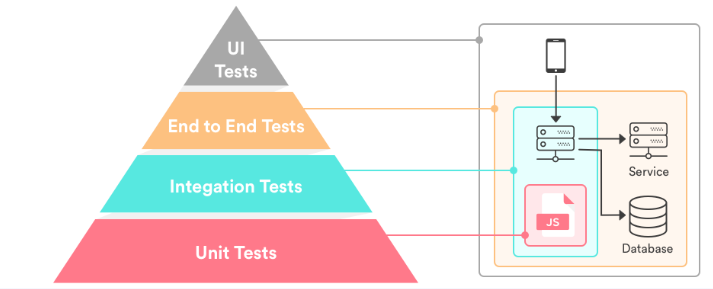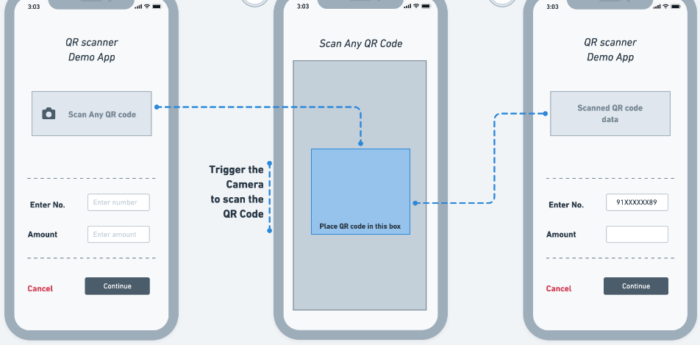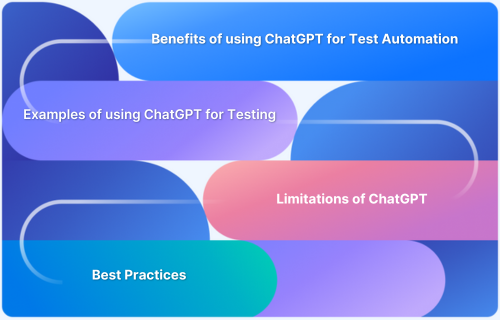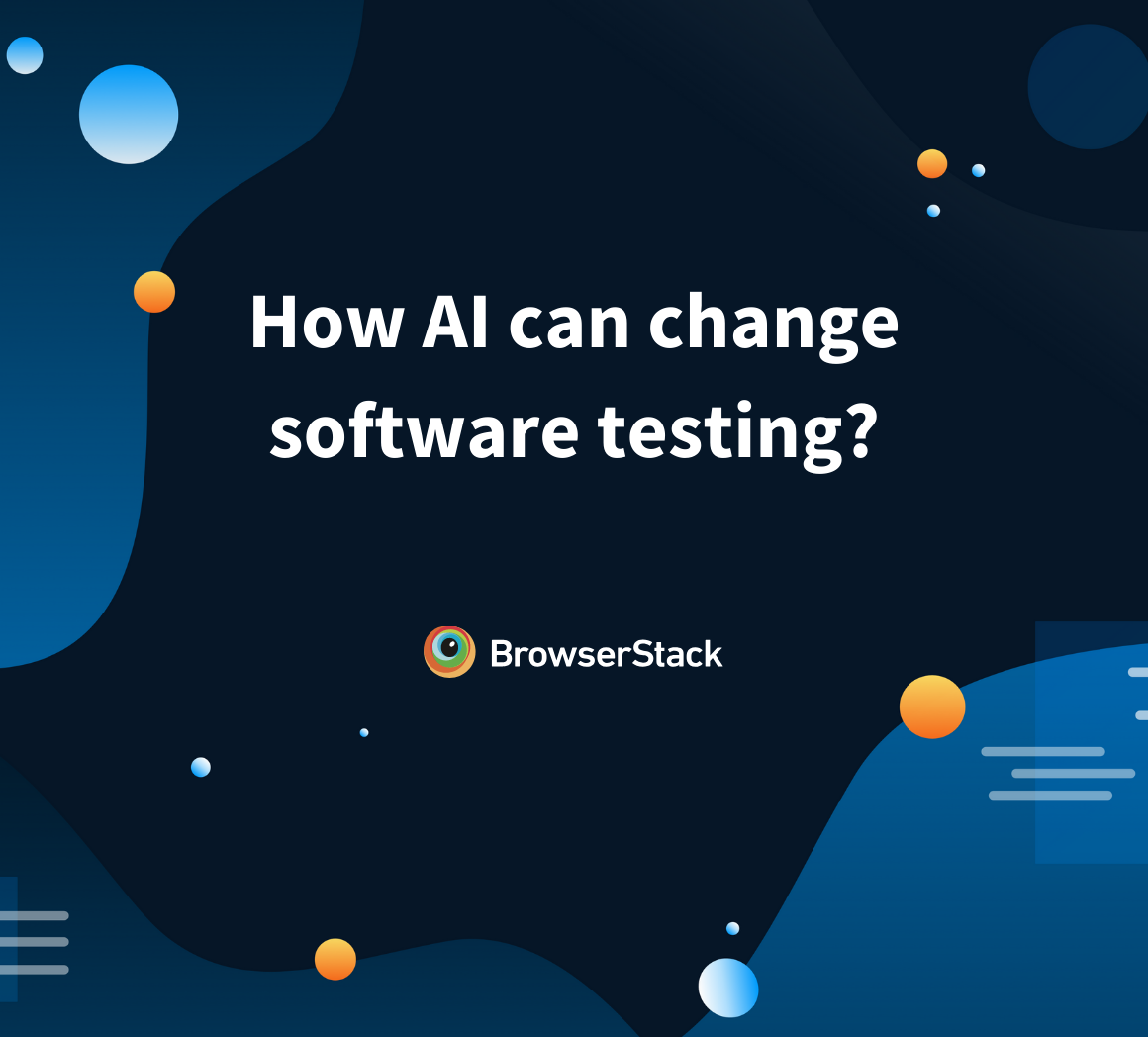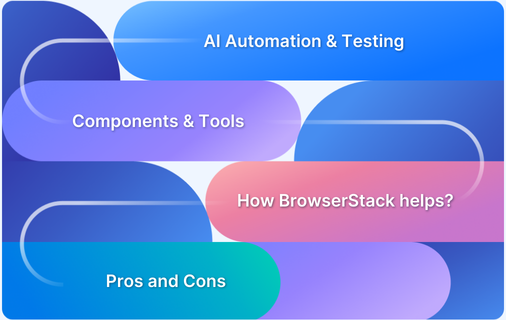The rapid pace of software delivery demands faster, smarter, and more reliable testing. Test automation is evolving with new tools, practices, and technologies that shape how teams ensure quality at scale.
Overview
The future of test automation is shaped by rapid technological advancements, evolving user expectations, and the need for faster, more reliable software delivery.
Key Trends:
- QAOps: Seamless integration of testing into DevOps pipelines for continuous quality.
- Scriptless Automation Testing: Simplifies test creation, enabling faster adoption and wider team participation.
- Headless Browser Testing: Speeds up test execution by running without a graphical interface.
- Shift Left Testing: Moves testing earlier in the development cycle to detect defects sooner.
- Microservices Testing: Ensures reliability and integration across distributed, service-based architectures.
- AI & ML Testing: Enhances test generation, defect prediction, and smart maintenance.
- Blockchain Testing: Validates security, performance, and integrity in decentralized applications.
- Geolocation Testing: Verifies application behavior across different geographic locations.
- Camera Image Injection Testing: Simulates real-world camera inputs for apps relying on image capture.
- Biometric Authentication Testing: Ensures accuracy and reliability of fingerprint, face, and voice recognition features.
This article explores the trends that will redefine our understanding and application of automation testing in 2025 and beyond.
Top 20 Trends of Test Automation in 2025
The following emerging practices and technologies are set to define the top 20 trends in test automation for 2025:
1. QAOps
One of the growing trends in software testing is QAOps – a combination of Quality Assurance and IT operations. QAOps utilizes a DevOps-based approach to achieve high-quality software.
In other words, QAOps takes the core ideas from continuous testing in DevOps, such as CI/CD, and brings teams together to work on the pipeline. QAOps framework integrates the QA processes, Automation, and QA Reporting with the Software Development Lifecycle (SDLC) process. In this approach, the Operations team mainly communicates and collaborates with the QA team to ensure the Continuous Delivery of products. The main purpose here is to ensure the quality of the application in terms of its performance, scalability, functionality, security, and usability, among others.
Some benefits of QAOps include:
- Provides constant learning, thus, increasing productivity and efficiency thereby, decreasing the client’s costs
- Provides a collaborative relationship between the QA, Dev, and Operations Team
- Helps fix the bugs faster and releases the product earlier than expected. This provides a reliable product
- Better customer experience as it ensures better quality and performance of the product.
Enhance Your QAOps with BrowserStack Automate
To boost your QAOps strategy and improve testing efficiency, consider using BrowserStack Automate.
Why Choose BrowserStack Automate?
- Seamless Integration: Effortlessly fits into your CI/CD pipelines, enhancing collaboration between QA, Dev, and Operations teams for faster workflows.
- Comprehensive Coverage: Access to a wide range of real devices and browsers ensures your application performs well across various conditions.
- Accelerated Testing: Run automated tests concurrently, speeding up bug identification and enabling quicker releases of high-quality products.
- Enhanced Reporting: Get real-time insights into test performance to make informed decisions and continuously improve quality.
- Better User Experience: Ensure high standards of performance, scalability, and security for a superior customer experience.
Embrace QAOps with BrowserStack Automate and transform your testing practices today!
Also Read: The Role of QA in DevOps
2. Scriptless Automation Testing
Scriptless Automation Testing provides a powerful interface for developing automation suites without writing any scripts. Thus, testers and developers can automate test cases using tools without thinking about coding. These tools record the tester’s actions while navigating the software to generate different tests required for different features. Developers can use different testing tools equipped with unique features for UI testing, end to end testing, among others. Based on test frameworks, the tools offer a lot of flexibility and generate reusable test cases.
Also Read: Fundamentals of Writing Good Test Cases
Some benefits of Scriptless Automation Testing include:
- Significant reduction in the cost of automation, hence, a good ROI
- Requires little effort in setting up and getting started
- Offers more flexibility for reusing test cases in different scenarios
- Helps in accelerating Quality delivery
Some examples of Scriptless Testing tools are BrowserStack Low Code Automation, Selenium IDE, TOSCA, etc.
BrowserStack Low Code Automation empowers teams to develop robust automation suites without the need for extensive coding knowledge. This innovative interface allows testers and developers to effortlessly automate test cases by simply recording their actions while navigating the application.
With a variety of unique features tailored for UI testing and end-to-end testing, BrowserStack provides the flexibility to create reusable test cases based on different testing frameworks.
By streamlining the automation process, BrowserStack Low Code Automation enables teams to enhance productivity, reduce development time, and maintain high-quality software—all without the complexities of traditional scripting. Embrace this transformative approach and take your testing to the next level.
3. Headless Browser Testing
Headless, as the name suggests, means a Web Browser without a User Interface. To elaborate, Headless Browser is just like any other browser, with the only difference being that nothing is visible on the screen. Here, the program actually runs in the background and you can keep track of it with the help of a Console or command-line interface. Thus, it is known to be the one without a Head/GUI.
Also Read: Headless Browser Testing with Selenium
With headless browser testing, end-to-end tests are performed without the browser loading the user interface of the application. Therefore, the tests interact with the page directly, eliminating any chances of instability and making everything run faster. Thus, testing not only becomes more reliable, faster, and more efficient, but it becomes more effective. Headless browser testing creates new opportunities by adopting the “shift-left” design thinking and moving toward integrating Quality Assurance (QA) into the software delivery process (what’s referred to as “QAOps”).
Some benefits of Headless Browser Testing include
- Improved speed and performance
- Allows efficient testing in a browser-less setup
- Helps in multi-tasking
- Saves time since unit testing is not required
Also Read: Headless Browser Testing with NightwatchJS
4. Shift Left Testing
The Shift Left testing movement is about pushing testing toward the early stages of the Software Development Life Cycle. By testing early and often, an organization can build high-quality code, eliminate code-patching, facilitate proactive collaboration, and save time and money. In practice, this means more unit testing to catch problems when they are introduced.
Some benefits of Shift-Left Testing include:
- Lower costs – bugs detected earlier are cheaper to fix
- Increased efficiency in SDLC
- Improved product quality
- Reduced time to market since the QA process doesn’t take as much time
Leverage BrowserStack Automate for headless browser testing to accelerate your shift-left approach. By running end-to-end tests without loading the UI, you ensure faster, more reliable results, pushing QA earlier in the SDLC. This integration fosters proactive collaboration between Dev, QA, and Ops teams, helping catch issues sooner, reduce late-stage fixes, and cut costs. With seamless CI/CD integration, BrowserStack Automate streamlines your testing process, delivering high-quality code efficiently and on time.
5. Microservices Testing
Microservices testing is becoming a central part of the Continuous Integration / Continuous Delivery (CI/CD) pipeline. This testing trend may be the next big thing in terms of its reusability and flexibility.
Microservices architecture allows development teams to create a product as a suite of small autonomous services formed around a particular business domain. When testing, teams can test each service and its functional pieces individually and monitor the ongoing performance. Microservices can be incorporated into a DevOps environment and help decrease the risk of falls in business applications.
Some benefits of Microservices Testing include:
- Improved scalability and data security
- Improved fault toleration
- Simpler to deploy
- Reusability across different business areas
- Faster time to market
6. Artificial Intelligence and Machine Learning Testing
Artificial Intelligence, and Machine Learning use predictive models to identify the different features for testing and prepare specific test plans without any human support. Therefore, automation testing teams can leverage AI and ML to improve their testing strategies.
Also Read: How AI can change Software Testing?
Test suites can be optimized by eliminating unneeded test cases and ensuring optimal test coverage is done by inspecting keywords. With AI and ML, much data can be analyzed, test cases can be reused, and detailed test reports can be generated. Even though humans can’t predict customer behavior, ML-enabled analytics can help by detecting unexplored sections. The insights can then be used to predict likely outcomes with the help of historical data.
Some benefits of AI/ML Testing include
- Improved accuracy and speed due to AI-based testing methodologies.
- Faster test case creation.
- Faster time to market.
Pro Tip : Harness the power of BrowserStack Percy to bring visual testing into your shift-left strategy. By automatically capturing and comparing visual changes across your application, Percy ensures pixel-perfect UI consistency throughout development. Integrated seamlessly into your CI/CD pipeline, it allows your team to catch visual bugs early in the SDLC, reducing rework and improving collaboration between Dev, QA, and design teams. With real-time feedback and efficient visual test coverage, Percy helps you deliver polished, high-quality products faster and more reliably.
7. Blockchain Testing
Blockchain is one of the most sought-after technologies in the world due to the rise of ledger-based technology. Its use cases are mind-blowing – from securing financial transactions to safely sharing enterprise data. Blockchain testing aims to check the security and reliability of the shared ledger system that connects different blocks. These blocks can contain different software applications with a specific node in a group. Besides security, blockchain testing also covers the load capacity and scalability of blockchain databases and ledgers. It follows an agile development methodologies, but for testing, it follows the Shift left approach.
Some benefits of Blockchain Testing include
- It eliminates defects in a decentralized ledger.
- It helps with validating all the different entities of the system.
- It ensures that the developed blockchain ecosystem is functioning as expected.
- It helps organizations build and use blockchain technology and the connected infrastructure securely.
Some popular tools include Ethereum tester, BitcoinJ, Truffle, etc.
8. Geolocation Testing
Geolocation is a technique that uses data collected from a computer or mobile device to identify the user’s real physical location. Geolocation allows any Internet-connected device to get all kinds of information in real time and pinpoint the user’s location at any given period. Geolocation testing refers to evaluating the geolocation capabilities of these computers or mobile applications.
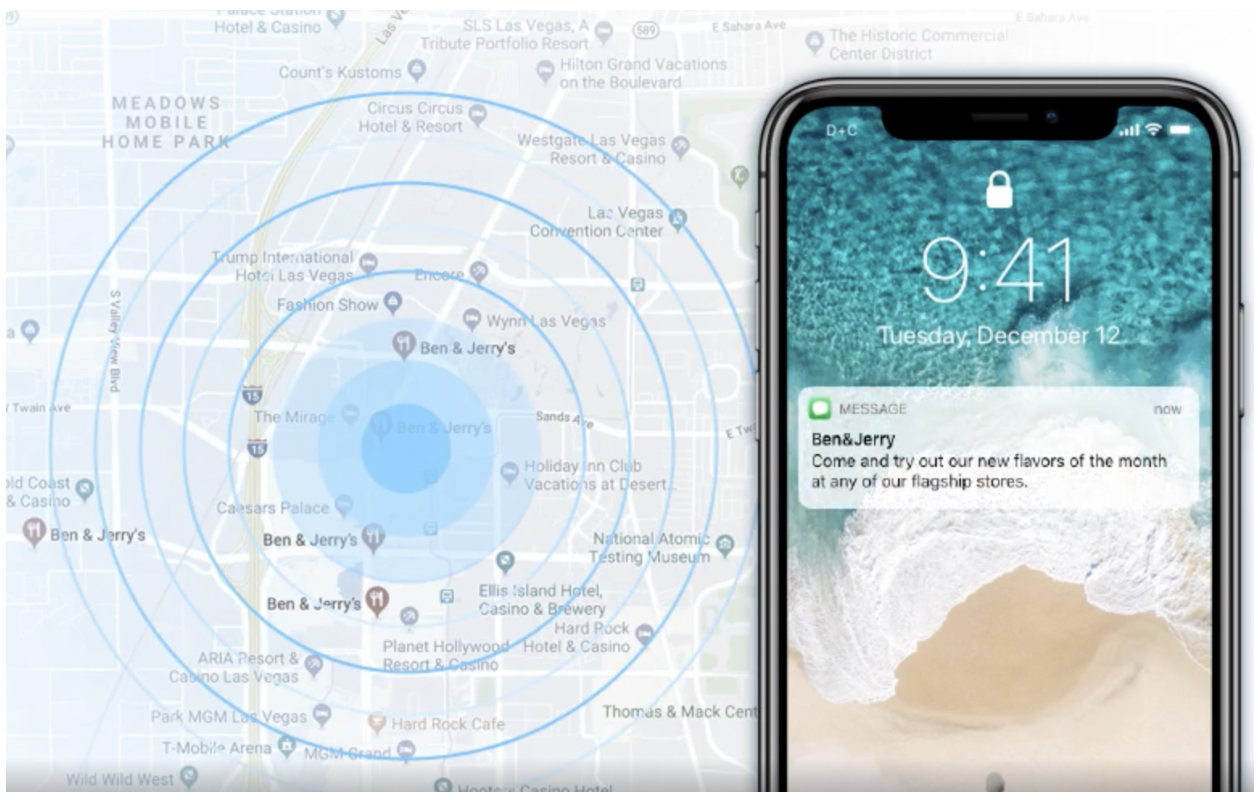
Some benefits of Geolocation Testing include
- Verifies application’s efficiency and performance across different geographical locations
- Increased productivity.
Some tools to perform Geo-location testing include BrowserStack, Google Chrome Developer Tools, etc.
Leverage BrowserStack Live to perfect your geolocation testing and ensure your application functions flawlessly across different regions. With real-time access to thousands of devices and browsers, you can easily simulate user experiences from any global location, testing geolocation features accurately without the need for physical devices. BrowserStack Live allows you to validate location-based functionalities, such as regional content, language settings, or geo-restricted services, ensuring a seamless experience for users worldwide. Test smarter and faster by integrating geolocation testing directly into your workflow with BrowserStack Live.
9. Camera Image Injection Testing
Camera Image Injection, or camera mocking, enables you to test image capture and QR/Bar code scanning from a mobile device camera. It then allows you to test your mobile app’s camera-based functionality such as check scanning, profile image capture, and QR / Bar code scanning, and deliver the best possible user experience.
Also Read: How to test QR code online
Sensor Instrumentation supports your app’s integration with various mobile sensors like Camera or biometric authentication. For image injection to work, the application to test must be installed with sensor instrumentation enabled.
Also Read: How to test Barcode online
10. Biometric Authentication Testing
Bio Authentication or Biometric Authentication is becoming popular for many purposes, including network logon, to provide a high-quality mobile application user experience. It involves using some part of your physical makeup to authenticate you. This could be a fingerprint, an iris scan, a retina scan, or some other physical characteristic.
By allowing customers to sign into their apps or authenticate their transactions by validating their biometric data, leading banks and other enterprises are providing mobile experiences that are both convenient and secure. It should therefore be no surprise that biometric validation will become increasingly important to mobile application testing. In the future, there can be an increase in scenarios involving not just one, but two forms of biometric validation. Hence, teams will need to test these biometric validations at scale, both manually and in automation, to achieve a high level of CI/CD.
Some benefits of BioAuthentication Testing include:
- Faster than entering a PIN or password
- Unique and Secure
- Provides precise and accurate identification and access
As technology evolves, Businesses must be aware of the test automation trends in 2025 that will impact the future of testing. To stay relevant in the software testing industry, testers must understand these trends and incorporate these technologies in day-to-day testing activities. With these trends, businesses can expect an increased ROI from software testing activities. Therefore, leveraging these test automation trends will help test more software in more ways and less time.
Ensure flawless camera-based and biometric functionality in your mobile apps using BrowserStack App Live. With features like camera image injection, you can easily test critical functions such as QR/bar code scanning, check scanning, and profile image capture across a wide range of real devices.
As biometric authentication becomes a standard for mobile security, BrowserStack App Live enables teams to test both fingerprint and facial recognition validations at scale, ensuring your app delivers a secure and seamless user experience. By integrating with CI/CD pipelines, BrowserStack App Live allows you to efficiently automate biometric and camera-based tests, ensuring your app meets the highest quality standards for your users.
11. Cloud-Based Testing
Cloud-based testing allows organizations to leverage cloud infrastructure for testing, enabling greater scalability and flexibility. This approach eliminates the need for physical infrastructure and offers easy access to diverse environments, allowing teams to perform tests across different devices, operating systems, and browsers from anywhere in the world.
12. Parallel Testing
Parallel testing is all about running multiple tests simultaneously, thereby speeding up the entire testing process. With growing demand for rapid releases and continuous integration, parallel testing will become a key strategy to reduce test execution time, optimize resource usage, and ensure faster time-to-market.
13. Hyper-Automation in Testing
Hyper-Automation takes automation beyond repetitive tasks, combining advanced AI and machine learning with robotic process automation (RPA). In testing, hyperautomation enhances decision-making processes by using AI to identify areas that can benefit from automation, leading to smarter, more efficient testing workflows.
14. Codeless API Testing
API testing is crucial for verifying the integrity of the data exchange between services. In 2025, codeless API testing will gain momentum, allowing testers to create and execute API tests without needing to write code. This will democratize API testing, making it more accessible to non-technical teams while maintaining robust coverage.
15. Test Automation in DevSecOps
As security becomes a critical concern, test automation in DevSecOps will focus on integrating security testing into every stage of the software development lifecycle (SDLC). Automation will be key in identifying vulnerabilities early, conducting continuous security assessments, and ensuring compliance with security standards while maintaining development speed.
16. Self-Healing Automation
Self-healing test automation tools use AI to automatically detect and fix broken tests. As test scripts often break due to frequent code changes, self-healing capabilities will help reduce maintenance efforts, allowing tests to dynamically adapt to changes in the application without manual intervention.
17. 5G Network Testing
With the rollout of 5G networks, testing mobile applications for 5G compatibility will become critical. Test automation for 5G will focus on evaluating performance, speed, and reliability under high-bandwidth conditions, ensuring that applications are optimized for the faster, more complex networks of the future.
18. AI-Driven Test Data Generation
AI-driven test data generation will help testers create large volumes of accurate, synthetic data for testing purposes. By using machine learning algorithms, teams can generate data that mimics real-world usage patterns, reducing the risks of using sensitive data and ensuring comprehensive test coverage.
19. IoT Testing Automation
With the rise of the Internet of Things (IoT), automated testing of IoT devices and ecosystems will become essential. Test automation for IoT will involve validating the performance, security, and interoperability of connected devices in different environments, ensuring smooth functioning and user experience.
20. Performance Engineering
In 2025, performance engineering will replace traditional performance testing, focusing not just on identifying performance bottlenecks but also on embedding performance optimization throughout the development lifecycle. Automated performance engineering tools will help teams continuously monitor and improve the speed, stability, and scalability of their applications.
What Influences the Future of Test Automation?
The evolution of test automation is shaped by a mix of technological, business, and user-driven factors. These forces collectively define how testing adapts to new challenges and opportunities.
- Advancements in Technology: Emerging technologies such as AI, machine learning, blockchain, and IoT introduce new testing needs and demand smarter automation approaches.
- Shift Toward Agile and DevOps: Continuous integration and delivery pipelines require faster, more reliable testing methods tightly integrated into development workflows.
- Complex Application Architectures: Microservices, APIs, and distributed systems increase the scope and depth of testing, driving innovation in automation tools and strategies.
- Evolving User Expectations: The demand for seamless digital experiences across devices and platforms pushes testing to validate performance, security, and usability at scale.
- Regulatory and Security Demands: Compliance requirements and rising cybersecurity threats make robust automated testing indispensable.
- Market Competition and Speed to Market: Businesses strive to release features faster without compromising quality, fueling investment in scalable and efficient automation solutions.
- Device and Platform Diversity: The rapid growth of mobile devices, operating systems, and browsers requires automation that can handle wide variations in real-world environments.
Conclusion
Test automation is undergoing a significant transformation, with trends like QAOps, scriptless automation, and headless browser testing continuing to expand the ways teams ensure software quality.
Alongside these established practices, emerging approaches such as cloud-based testing, hyper-automation, and self-healing test automation are reshaping how testing is conducted. Innovations, including 5G network testing, IoT testing automation, and AI-driven test data generation, are enabling smarter, faster, and more scalable testing processes.
By embracing these trends, organizations can deliver reliable, high-quality software while optimizing workflows for the future of development.
Amidst these evolving practices, real-device testing remains critical for ensuring accuracy and reliability. While many innovations emphasize speed and efficiency, nothing replaces the importance of validating applications on actual devices used by end users.
With the growing complexity of mobile environments—such as geolocation, biometric authentication, and camera-based features—real-device testing ensures consistent performance across diverse hardware and software configurations. Integrating real-device testing into automation strategies is essential for delivering seamless, high-quality user experiences in real-world conditions.



